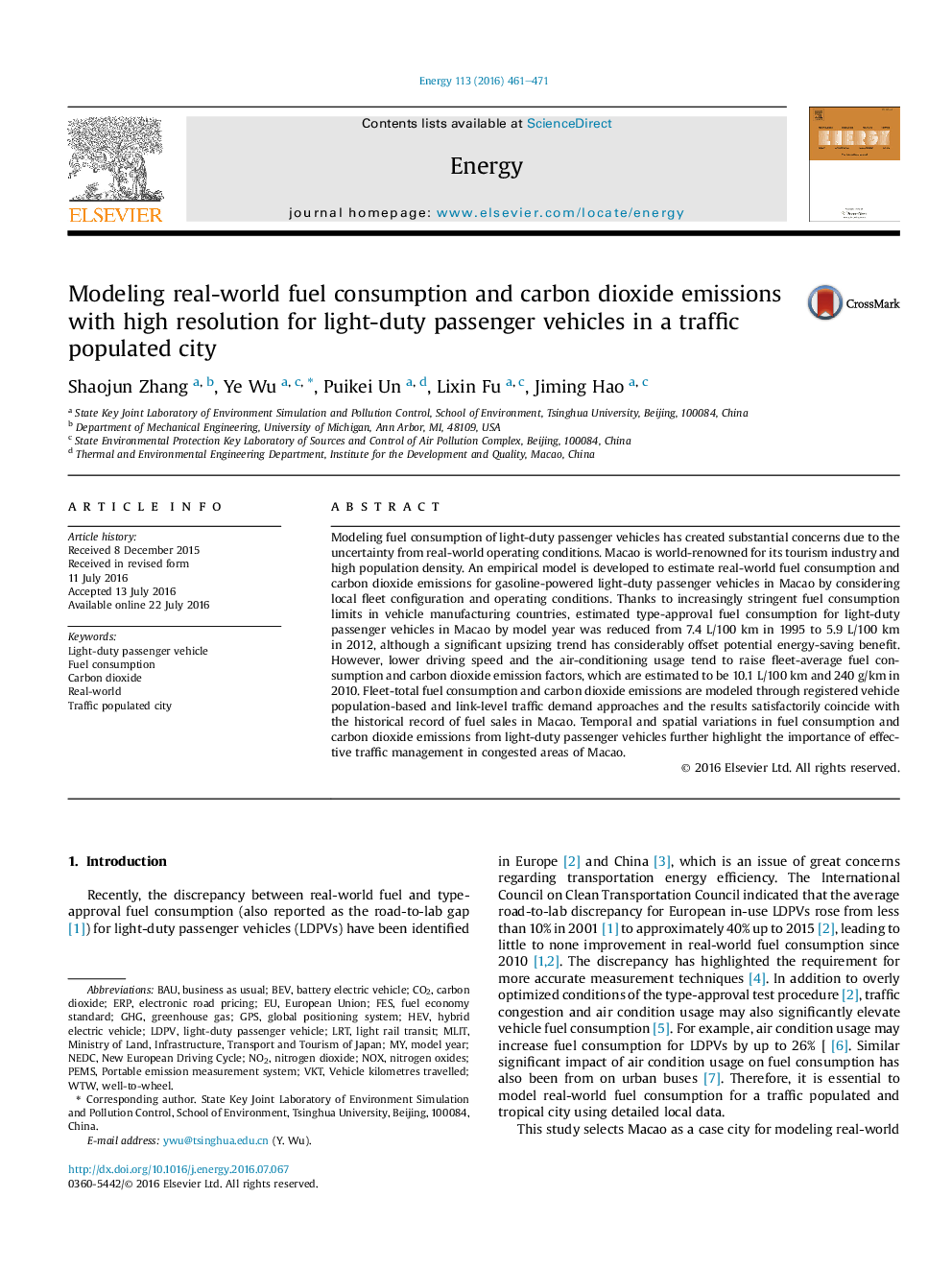| Article ID | Journal | Published Year | Pages | File Type |
|---|---|---|---|---|
| 1730754 | Energy | 2016 | 11 Pages |
Abstract
Modeling fuel consumption of light-duty passenger vehicles has created substantial concerns due to the uncertainty from real-world operating conditions. Macao is world-renowned for its tourism industry and high population density. An empirical model is developed to estimate real-world fuel consumption and carbon dioxide emissions for gasoline-powered light-duty passenger vehicles in Macao by considering local fleet configuration and operating conditions. Thanks to increasingly stringent fuel consumption limits in vehicle manufacturing countries, estimated type-approval fuel consumption for light-duty passenger vehicles in Macao by model year was reduced from 7.4Â L/100Â km in 1995 to 5.9Â L/100Â km in 2012, although a significant upsizing trend has considerably offset potential energy-saving benefit. However, lower driving speed and the air-conditioning usage tend to raise fleet-average fuel consumption and carbon dioxide emission factors, which are estimated to be 10.1Â L/100Â km and 240Â g/km in 2010. Fleet-total fuel consumption and carbon dioxide emissions are modeled through registered vehicle population-based and link-level traffic demand approaches and the results satisfactorily coincide with the historical record of fuel sales in Macao. Temporal and spatial variations in fuel consumption and carbon dioxide emissions from light-duty passenger vehicles further highlight the importance of effective traffic management in congested areas of Macao.
Keywords
FeSelectronic road pricingModel yearMLITWTWVKTBEVLRTPEMsHEVNEDCGHGBaUNOxEuropean UnionNitrogen oxidesERPLight rail transitWell-to-wheelHybrid electric vehicleReal-worldCarbon dioxideGPSPortable emission measurement systemGlobal Positioning SystemFuel consumptionNitrogen dioxideNO2Battery electric vehiclenew European driving cycleBusiness as UsualCO2Greenhouse gas
Related Topics
Physical Sciences and Engineering
Energy
Energy (General)
Authors
Shaojun Zhang, Ye Wu, Puikei Un, Lixin Fu, Jiming Hao,
